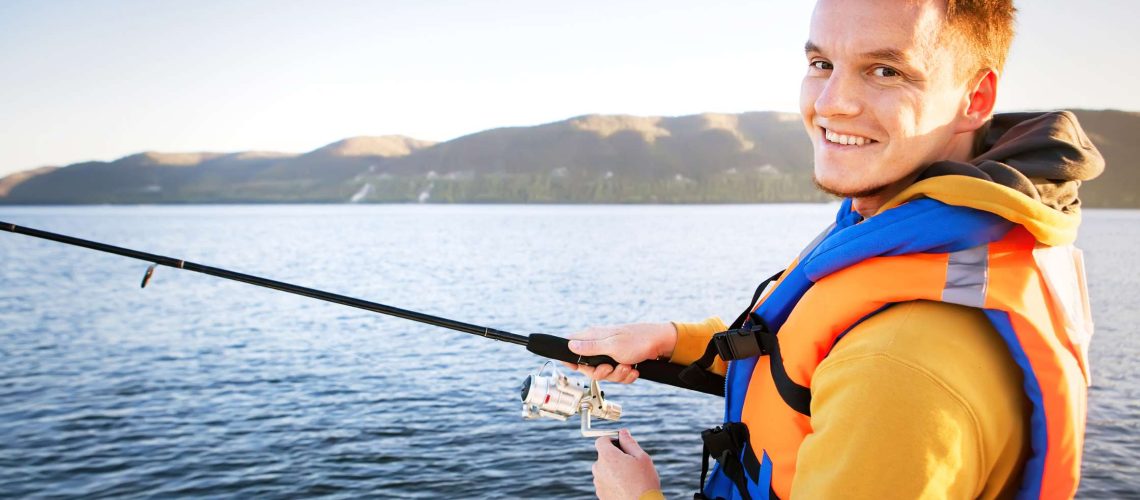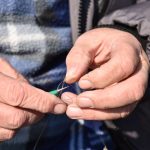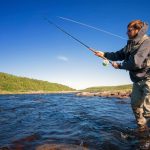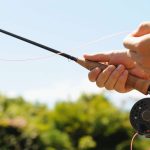Did you know that only 20% of fishermen consistently catch fish, while the remaining 80% struggle to reel in a catch? If you’re tired of being part of the latter group, then it’s time to take your fishing skills to the next level.
In this discussion, we will explore various techniques and strategies that will help you become a more successful angler. From perfecting your casting skills to understanding rigging techniques, we will provide valuable insights and tips to greatly improve your chances of landing that trophy catch.
So, if you’re ready to leave the frustration behind and start reeling in more fish, keep reading to discover the secrets of becoming a better fisherman.
1. Perfecting Your Casting Skills
Want to improve your fishing skills? Start by perfecting your casting technique.
Casting accuracy techniques are essential for increasing your chances of landing a catch. Focus on your aim and release the line smoothly to hit your desired spot accurately.
Distance casting tips can help you reach those hard-to-reach fishing spots. Practice your power and timing to achieve maximum distance.
Muscle memory exercises are crucial for effortless casting. Repeat casting motions to train your muscles and improve your muscle memory.
Perfecting casting form is key to achieving consistent and accurate casts. Pay attention to your grip, stance, and rod position to optimize your casting technique.
2. Mastering Fishing Knots
Now that you’ve perfected your casting technique, it’s time to focus on mastering fishing knots to ensure your tackle is secure and your fishing experience is successful. Here are some key points to help you become a knot tying expert:
Knot tying techniques: Learn the proper techniques for tying different knots, such as the improved clinch knot, Palomar knot, and Uni knot. Practice tying these knots until you can do it effortlessly.
Knot strength and reliability: Understand the importance of using strong and reliable knots. A weak knot can result in lost fish and frustration. Test your knots regularly to ensure they hold up under pressure.
Learning new knot variations: Expand your repertoire by learning new knot variations. This will give you more options regarding different fishing situations and types of tackle.
Knot-tying tools and accessories: Invest in good quality knot-tying tools and accessories, such as a knot-tying tool or a fishing line cutter. These tools can make the knot tying process easier and more efficient.
Troubleshooting common knotting problems: Familiarize yourself with common knotting problems, such as line slippage or knot failure. Knowing how to troubleshoot these issues will save you time and frustration on the water.
3. Expanding Your Fishing Knowledge
To expand your fishing knowledge, immerse yourself in educational resources and stay updated on the latest techniques and advancements in the sport. Explore fishing blogs that offer valuable tips and tricks to enhance your skills. These blogs are a treasure trove of information, providing insights into advanced fishing techniques, the latest trends, and effective fishing strategies and tactics.
By regularly reading these blogs, you can stay ahead of the curve and continually improve your fishing knowledge. Additionally, try to attend fishing workshops or seminars, watch instructional videos online, and join fishing communities where you can learn from experienced anglers.
Continuously expanding your fishing knowledge will make you a better angler and enhance your overall fishing experience.
4. Maintaining Sharp Hooks
To ensure optimal fishing results, it’s crucial to maintain sharp hooks on all your gear. Here are some key points to help you retain hook sharpness:
- Sharpening techniques: Learn different methods for sharpening hooks, such as using a hook file or a sharpening stone. Practice these techniques regularly to keep your hooks razor-sharp.
- Hook sharpening tools: Invest in high-quality hook sharpening tools like sharpening stones, hook files, or hook sharpening kits. These tools will make the sharpening process more efficient and effective.
- Importance of sharp hooks: Sharp hooks increase your chances of hooking fish and ensure a secure hook set. Dull hooks can result in missed bites and lost fish.
- Signs of a dull hook: Inspect your hooks regularly for signs of dullness, such as a lack of sharpness or a dull point. If you notice these signs, it’s time to sharpen or replace the hooks.
5. Learning From Fishing Videos
Want to learn new fishing techniques and stay updated on the latest trends? One of the best ways to do so is by learning from fishing videos.
Analyzing techniques demonstrated in these videos can greatly improve your fishing skills. By watching experienced anglers in action, you can learn from their mistakes and apply new techniques to your own fishing endeavors.
Seeking expert advice through videos allows you to gain valuable insights and tips to help you become a better angler. Whether it’s learning how to cast more accurately or discovering innovative ways to lure fish, fishing videos offer a wealth of knowledge that can enhance your fishing skills.
6. Fishing Equipment Maintenance
If you want to improve your fishing skills, taking care of your fishing equipment is essential. Here are five important aspects of fishing equipment maintenance:
- Equipment cleaning: Regularly clean your fishing gear to remove dirt, debris, and saltwater residue that can cause damage over time.
- Reel maintenance: Clean and lubricate your reels to ensure smooth operation and prevent rust or corrosion.
- Boat care: If you have a boat, maintain it by checking for leaks, cleaning the hull, and servicing the engine regularly.
- Rod maintenance: Inspect your fishing rods for any signs of damage, such as broken guides or loose reel seats, and repair or replace them as needed.
- Tackle organization: Keep your tackle organized to easily find and access the right bait, hooks, and other fishing accessories when you need them.
7. Understanding Rigging Techniques
To improve your fishing skills, it’s essential to understand various rigging techniques. Here are some key points to consider:
Rigging variations: Familiarize yourself with different rigging methods, such as drop shot, Alabama, and Texas rigs. Each technique has its own advantages and is suitable for different fishing scenarios.
Rigging for different species: Different fish species require different rigging approaches. Research and learn about the rigs that work best for your target fish.
Advanced rigging techniques: Once you have mastered the basics, explore advanced rigging techniques to enhance your fishing game. These techniques can include using multiple hooks or adding weights for different effects.
Rigging for specific fishing conditions: Adapt your rigging techniques based on the fishing conditions, such as water depth, temperature, and clarity. Adjusting your rigs accordingly can greatly increase your chances of success.
Rigging for different bait types: Different baits require different rigging techniques to maximize their effectiveness—experiment with rigging your baits in various ways to find what works best for each bait type.
Understanding and mastering rigging techniques will improve your chances of landing more fish and make your fishing experience more enjoyable and rewarding.
8. Researching Prime Fishing Spots
Now that you have a solid understanding of rigging techniques let’s dive into the importance of researching prime fishing spots.
Locating hidden fishing spots is crucial for maximizing your chances of success. By analyzing underwater topography, you can identify areas where fish are likely to congregate, such as drop-offs, weed beds, or submerged structures.
Studying fish behavior patterns is another key aspect of researching fishing spots. Understanding their feeding habits, migration routes, and preferred habitats will help you pinpoint the best areas to target them.
Researching seasonal fishing patterns is essential, as fish activity can change yearly.
Lastly, understanding the impact of weather on fishing success is crucial. Temperature, wind, and barometric pressure can greatly influence fish behavior.
Yellow Bird Products: Your Source for High-Quality Brand-Name Fishing Products
At Yellow Bird Products, we understand the importance of having the right fishing equipment to enhance your angling experience. As avid anglers, we’re committed to providing our clients with top-notch fishing products trusted by professionals and enthusiasts alike.
With our extensive selection of brand-name fishing products, you can rest assured that you’re getting the best tools for the job. From high-quality spoons and hard baits to top-of-the-line spinners and jigs, our inventory is carefully curated to meet every angler’s needs, regardless of skill level or fishing style.
Our dedication to customer satisfaction sets us apart from other fishing retailers. We take the time to understand your unique fishing needs and offer personalized recommendations to help you make the right choices. Whether you’re a seasoned pro looking to upgrade your gear or a beginner needing guidance, our team of fishing experts is here to assist you every step of the way.
When you choose Yellow Bird Products, you can have confidence in the durability and performance of the products you purchase. We only carry trusted brands that have proven their reliability and effectiveness on the water. Our commitment to quality ensures that you can focus on what matters most—enjoying your time on the water and reeling in those trophy catches.
So don’t settle for subpar fishing products that hinder your angling success—trust Yellow Bird Products to provide you with high-quality brand-name fishing products that will elevate your fishing game. Visit our website or contact us today to explore our extensive inventory and experience the Yellow Bird difference.
Happy fishing!





